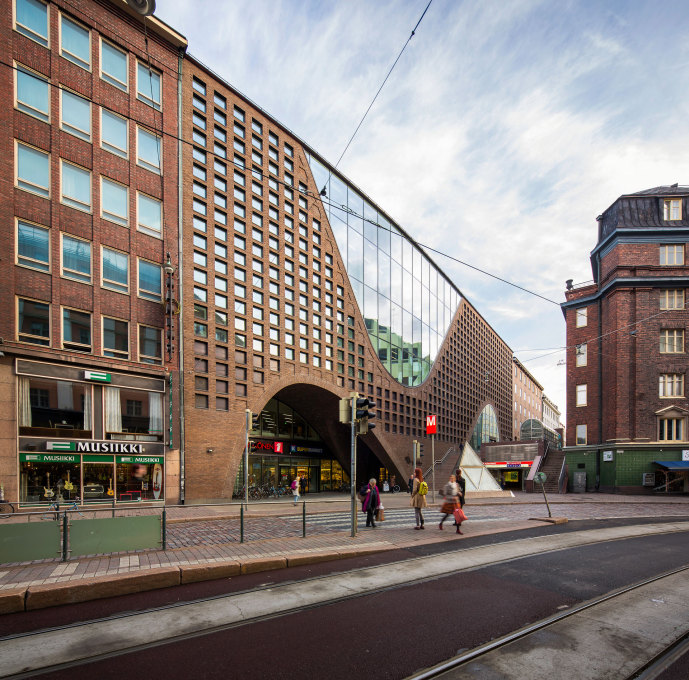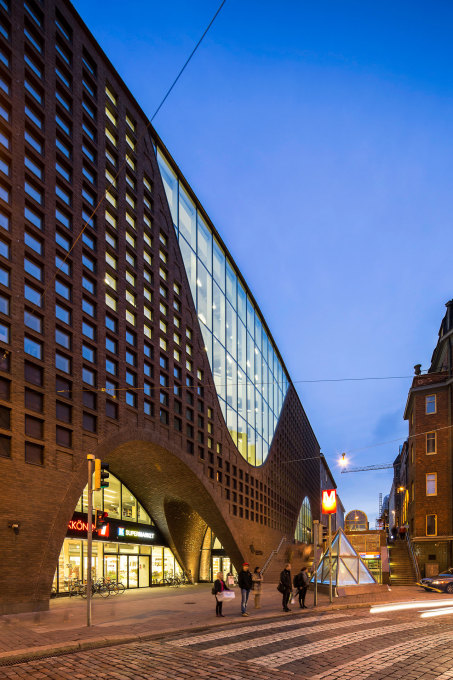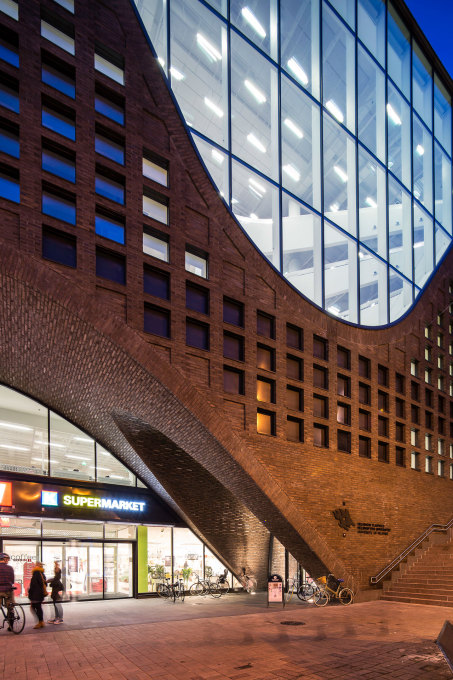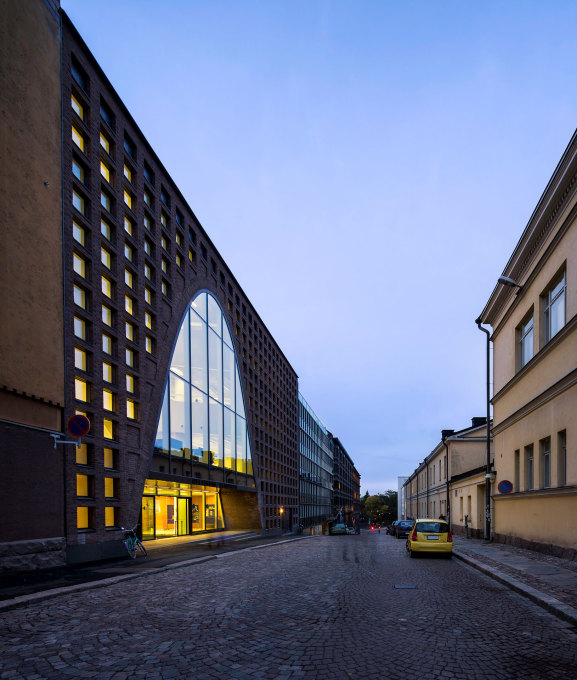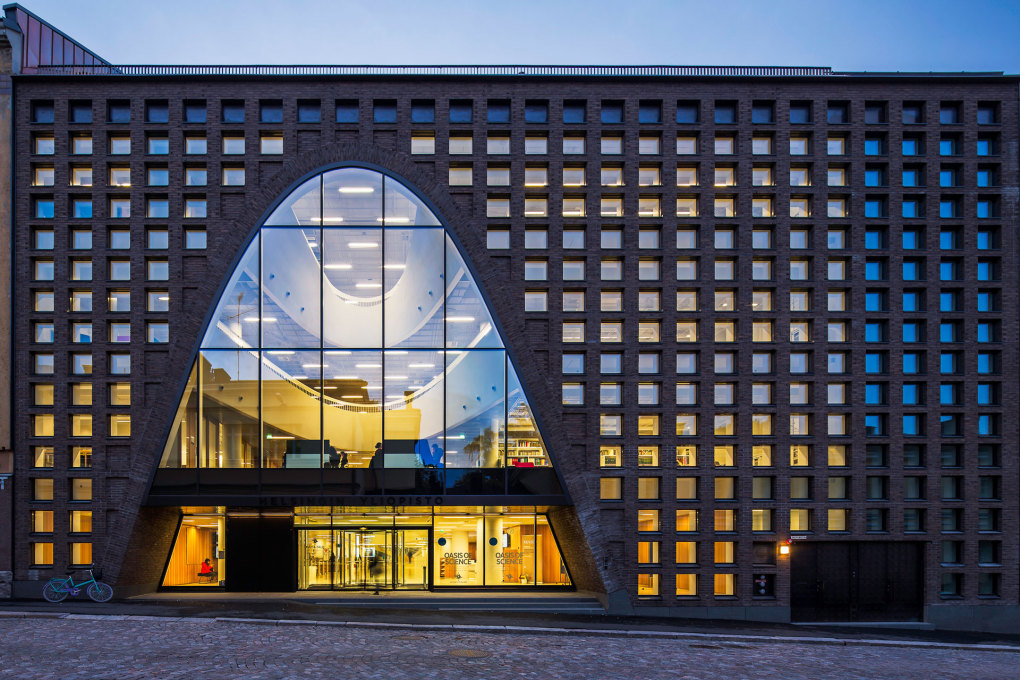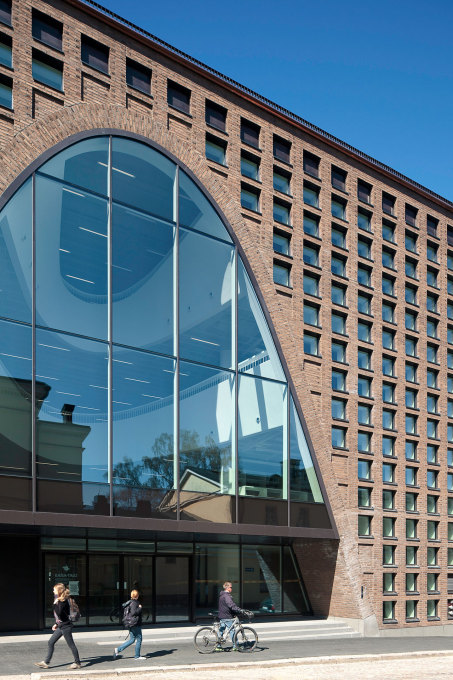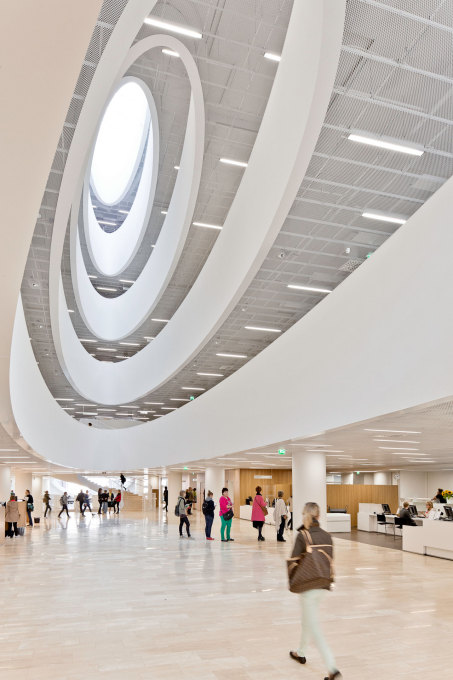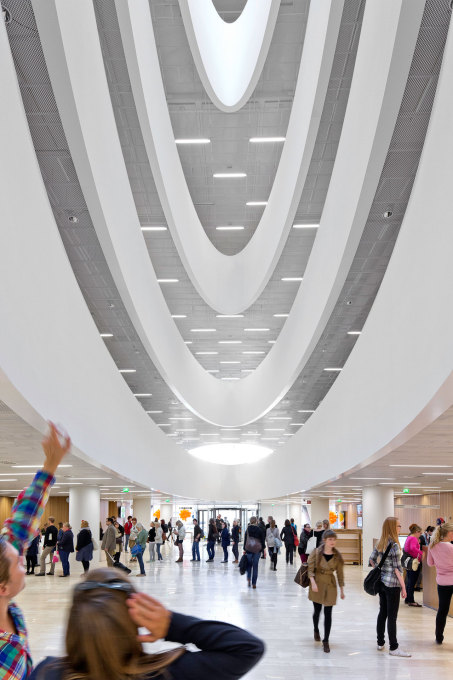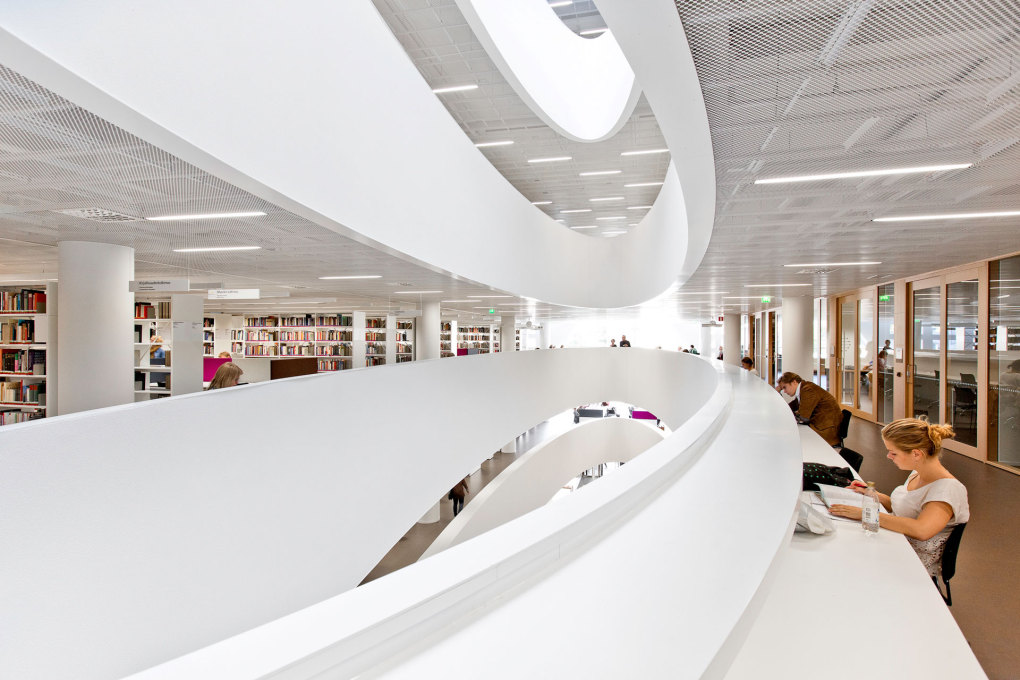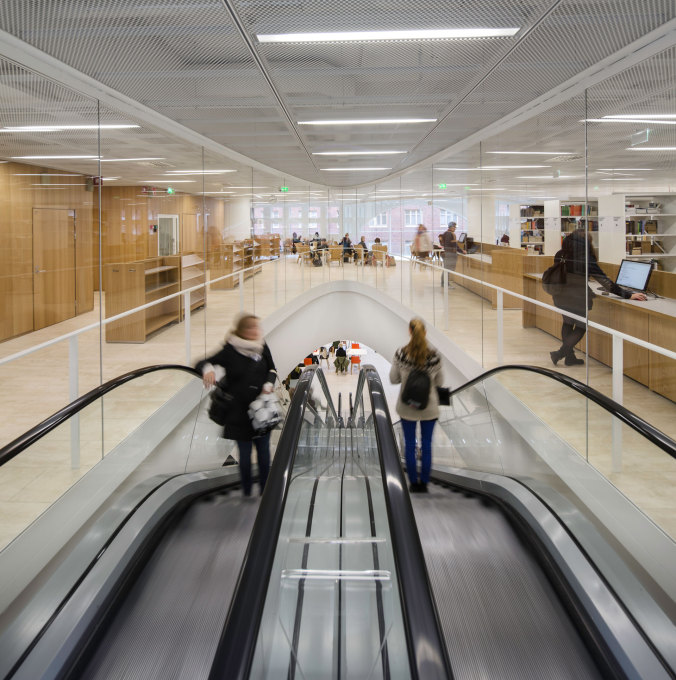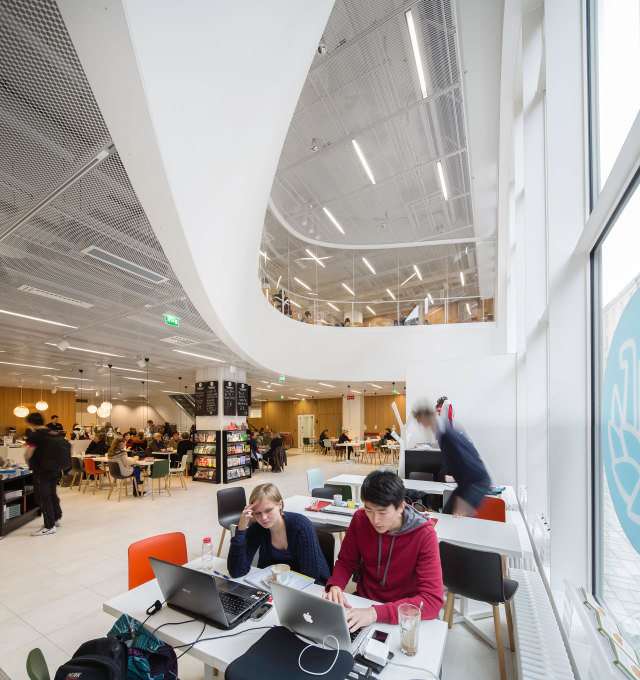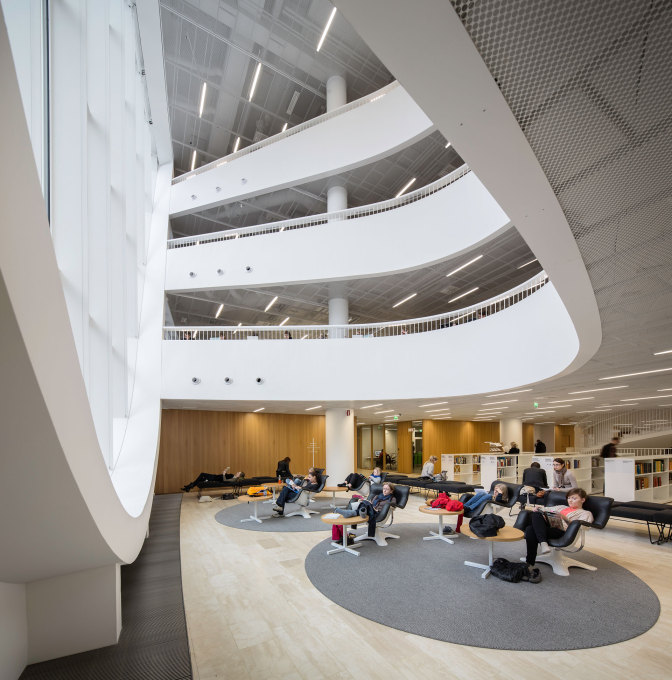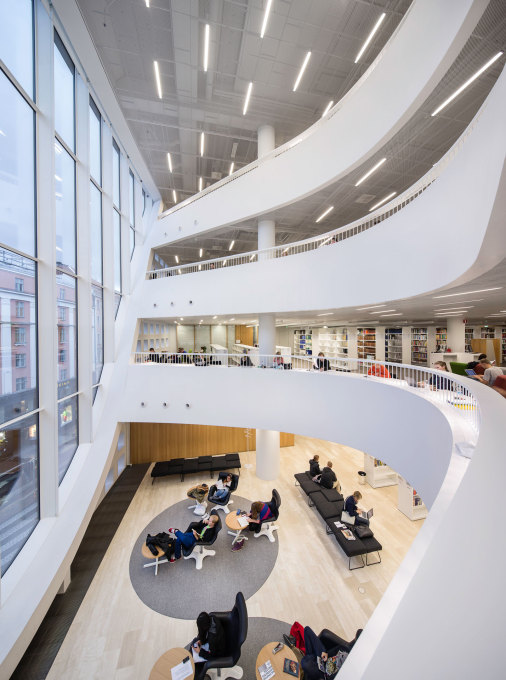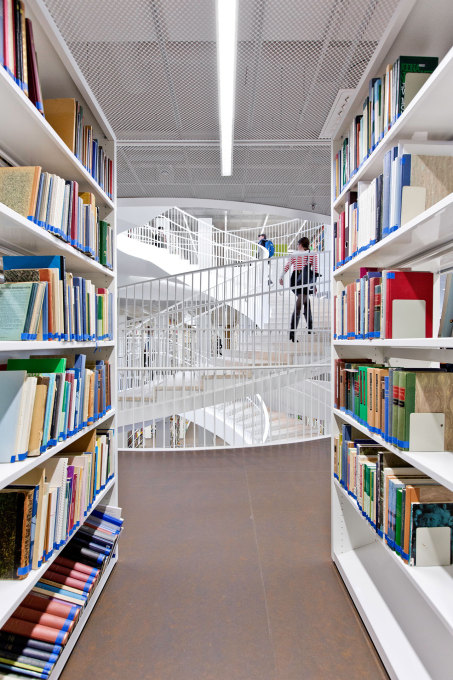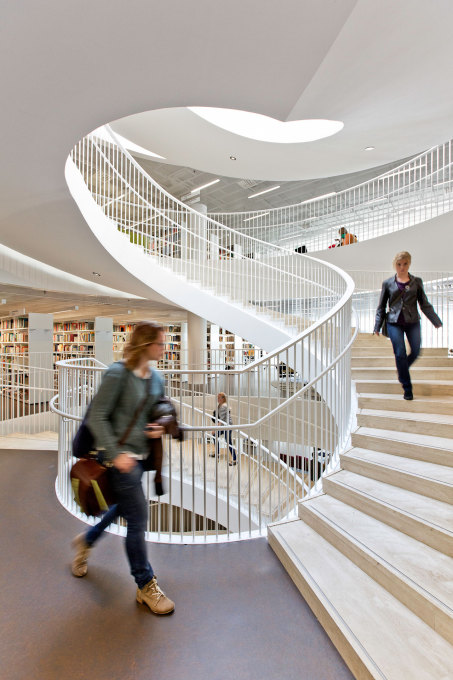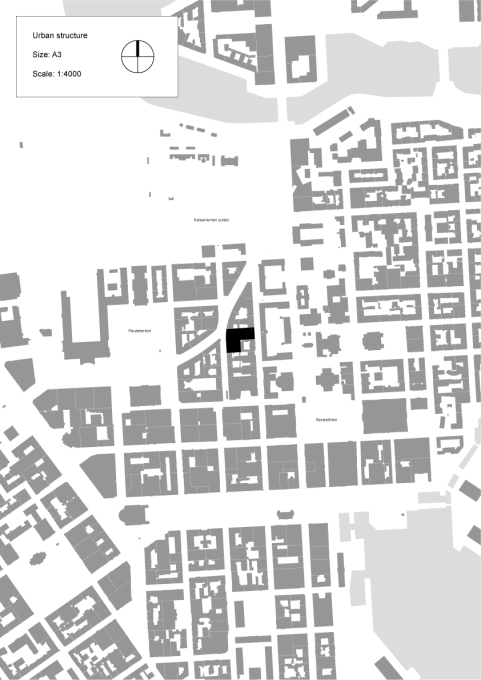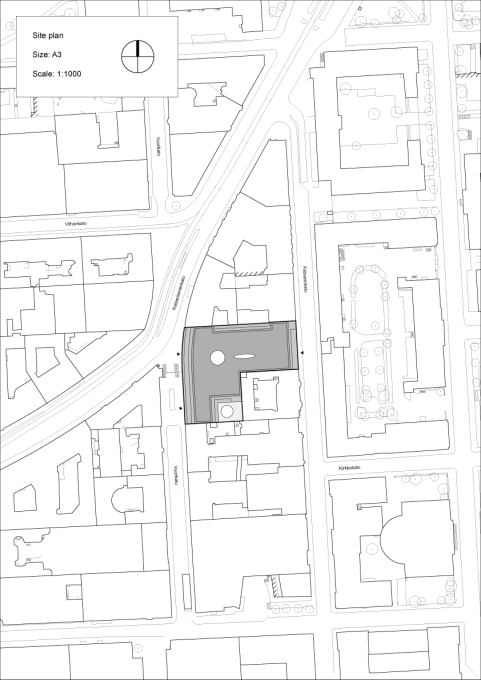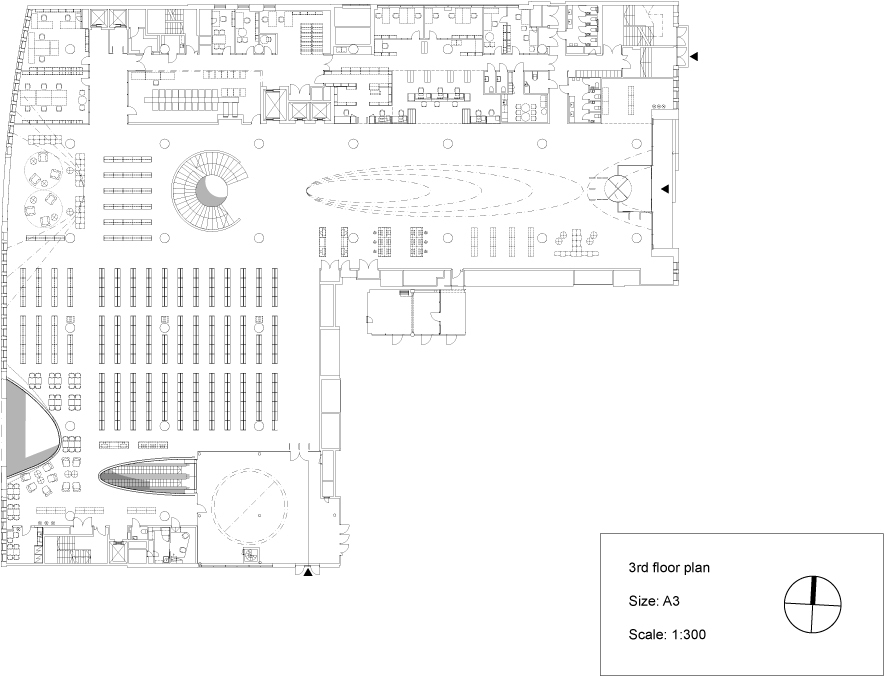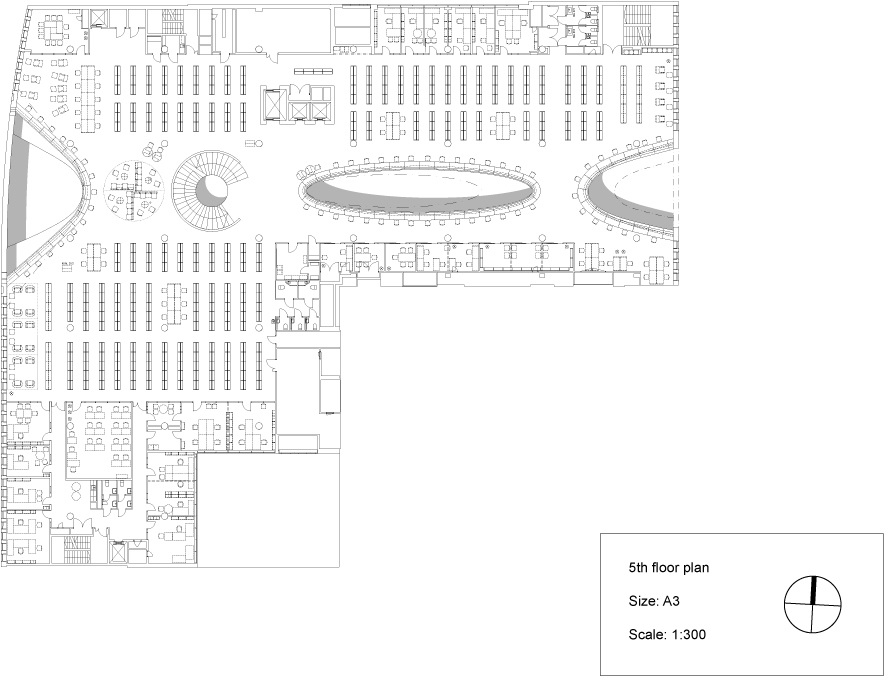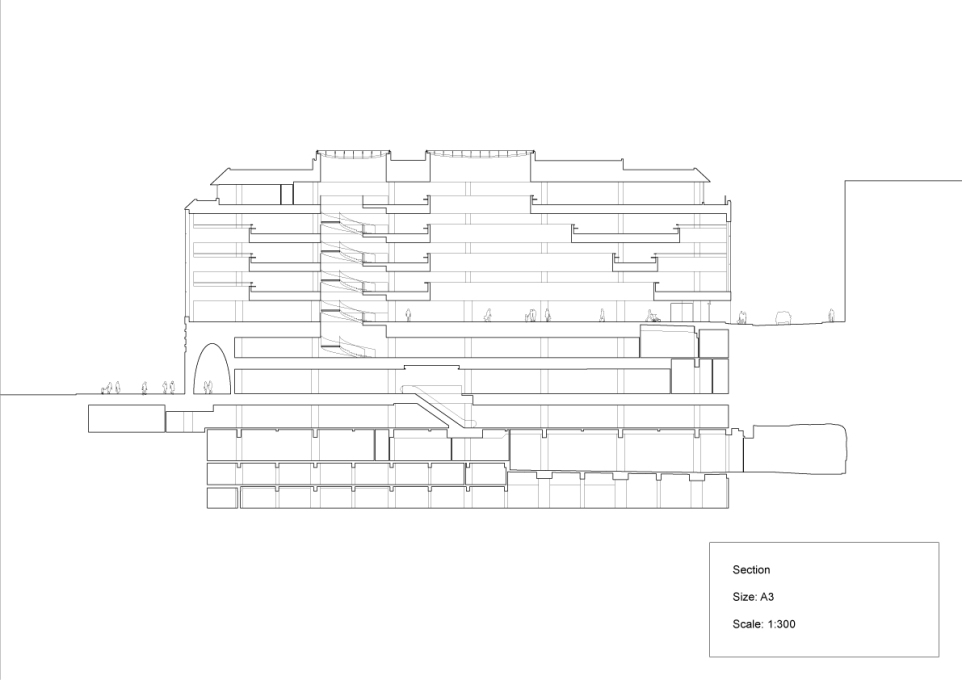The University of Helsinki has an urban university campus in the heart of the oldest area of the Finnish capital. The university prides itself on its main building and its library – the oldest architecture on its campus – both designed by Carl Ludwig Engel, who built almost all of the most important public buildings in early nineteenth century Helsinki.
The university administration made a choice to concentrate its humanities departments in its designated central campus. A decision was made to build a new central library adjacent to some of the faculties located in partly remodelled buildings and very close to the old main building at the Senate Square and the original Engel Library. As a result, several faculty libraries were closed down and the effort was made to concentrate all of the books and information under the same roof. About 1.5 million books were to find a new home in a building which was, of course, slated to become a functional modern library regarding organization, information, orientation, distribution of different spaces, and user comfort, among others requirements. The building was also intended to boost support for the humanities in general.
Young, emerging architects
Several Finnish architecture offices were invited to compete for the opportunity to design the library, including the office of Selina Anttinen and Vesa Oiva (AOA Architects), who had previously completed only smaller, though well-executed, projects. Nevertheless, the young office won – beating several more established practices. They had cleverly decided to include an expert academic librarian in their team, for highly-specialized advice. The subseqent completion was realized in record time: from its inception in 2008 it took only four years for the building to be opened.
Given the size and importance of the commission and the short realization schedule, the quality of the results in light of the architects’ relative lack of experience is impressive. It is satisfying to see how extraordinarily well the new library has turned out. It seems that everyone is genuinely happy: the public, academia, the architects, and even the critics. When the building, called Kaisa, opened at the end of the summer in 2012, it immediately attracted attention and received high acclaim, not only as an academic building, but also as a space for the general public. A university café/bookshop faces the street and provides access to the escalators, and this makes the library directly accessible from the adjacent commercial streets of Kaisaniemenkatu and Vuorikatu. The design also incorporates the return of prexisting stores on the site, including an underground supermarket and a furniture, kitchenware, and electronics store.
An open and transparent library
The new library is walking distance from the whole city campus, and is optimally located in relation to public transportation networks. The official entrance is on Fabianinkatu Street, close to the other important buildings of the University of Helsinki. The building can also be reached through interior passages from the buildings of other faculties on the same block, reaching all the way from the Porthania building, a recently restored gem by architect Aarne Ervi from 1957.
From the main foyer a sensual oval atrium, beautifully clad in cream-colored natural stone and with walls in glass and wood, provides an open view all the way up to the building’s top level. A generous staircase leads up into the building, and in addition to several escalators supporting vertical traffic, there are elevators that speak the current position of passengers in the building out loud. Classic modern and contemporary design elements by Finnish designers have been chosen for the interior furnishings. For instance, happy and comfortable readers in woolen socks occupy designer Yrjö Kukkapuro’s classic black leather chairs, which have been generously distributed at the bottom of the large, arched glass opening in the façade. On the upper floors, the white railings around the atrium/light-well opening and central window are designed to extend into elegantly curved work tables, at which people can sit and read, while the large window offers a nice opportunity to lift one’s face from a book or laptop now and then and gaze towards the buzzing city.
The drama created by the main arched window that faces the main traffic artery and the various views from the different levels of the building are real visual treats, both when seen from the outside and from within. The repetitive square windows in the brick façade may be less dramatic from the inside, but they offer nice framed views of the surrounding buildings and vistas. And the treatment of the main façade on Kaisaniemenkatu Street is skillful: it fits in with the variety of urban buildings surrounding it.
The domes of Helsinki
The most peaceful floor of the building offers quiet research and study rooms, and, last but not least, a lovely roof terrace. There one can enjoy the view of the domes of the buildings by C. L. Engel, the rooftops of the capital, and even the wider vistas reaching all the way to the open sea. One of the domes, just a stone’s throw away, is the famous old library by Engel with its famous fantastic interiors – those who still seek a historic nineteenth century library atmosphere can go there with no possibility of fiddling with laptops or iPhones in the most sacred reading rooms.
The Kaisa library is an excellent newcomer in the chain of public buildings designed to ensure an intelligence-driven future for Finland. Finns are very proud of their public library system, which is a true asset as far as equality, education and public opportunities are concerned. AOA Architects succeeded in creating a building that seems like it has been there for a long time, yet is appropriate to contemporary needs. It has a certain monumentality to it, lacks any trendy gestures, and it exists in civilized conversation with the surrounding neighborhood. Kaisa is a woman’s name, short for Katarina. And this Kaisa is a very photogenic “lady” indeed.
-- Tarja Nurmi, Helsinki

Blog Building of the Week 22 Nov 2012



